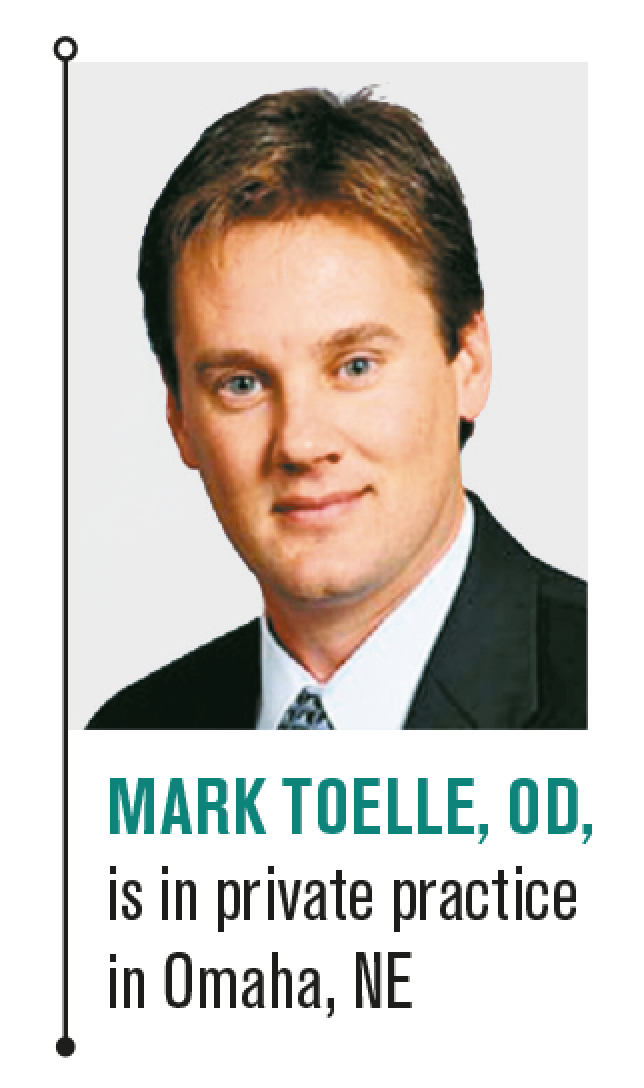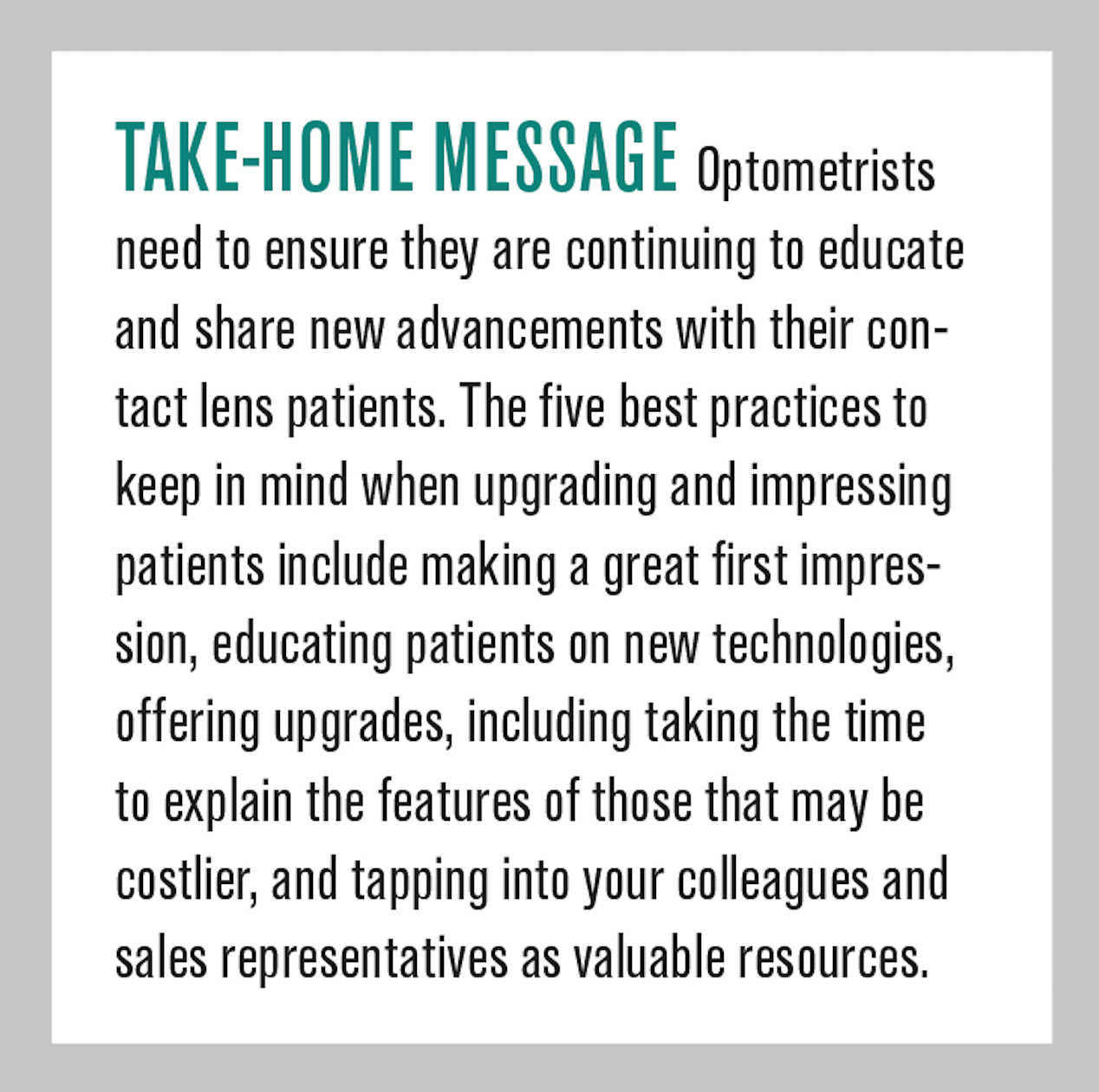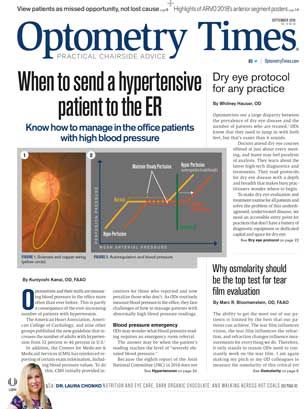5 tips to impress contact lens patients



Optometrists should not only provide eye care service, but share information and educate patients about new technologies and products in eye care and related products, such as contact lenses, frames, lenses, and more.
If patients are not learning about the latest innovations in contact lens and lens care products by their optometrists, they may not see a reason to continue to visit the office any longer.
Upgrade your patients to the latest contact lens technology, and impress them in the process.
These five tips can help you do that.
1. First impressions count, so make it great
In most cities, patients have many offices to choose from for their eyecare needs. Making a good first impression is very important and a perfect reason to upgrade the patient into an innovative contact lens technology.
A good first impression starts the moment a patient walks through the door. Having a welcoming and friendly office environment is key for making a good first impression and important for retaining patients.
The first thing our staff does when checking in a patient is thank him for choosing our office for his visit. At the same time, the staff obtains basic information about the patient and his eye health to make his first visit as easy and efficient as possible.
Related: How to create a happy patient
When meeting a patient for the first time, shake hands and make eye contact. Take the time to explain the importance of her visit and reinforce good contact lens care and eye health practices. If her last doctor did not educate her about innovative technologies, she will likely be impressed with your service and return for future eye care.
Our office also offers a referral program. When patients refer their friends and family, they receive a 10 percent discount on their next visit and products. By offering this program, our team can reward our patients for their loyalty and leverage word of mouth to grow our patient base.
2. Take time to educate your patients on innovative technologies
When I reflect on my own personal buying habits, it’s easy to see that my purchases were made based on how educated I was on that product or service. I find if someone takes the time to educate me on the benefits of an upgraded product and it fits my needs, I will most likely choose the new technology over the old.
Related: Why ODs should embrace new technologies in eye care
When a patient comes in with contact lenses with old technology, walk her through the features of the new lens and how this technology can provide excellent vision and comfort in the changing world of digital and visual demands. You will likely discover that by going beyond simply describing the features of a new product, patients will be able to understand that their choices can impact their vision and comfort with contact lenses in the future.
3. Always offer the “the next big thing”
Most patients will wait in line for the next smart phone upgrade and thus generally accept the costs associated with the upgrade because it is what they’re used to.
But for some reason, optometrists assume that patients do not expect or want the same when it comes to contact lenses. Many of our patients are very accustomed to “the next big thing,” and we should be proud to share the latest technology that our contact lens manufacturers bring to market for our industry.
By educating patients on newer technologies and advancements in contact lenses, patients will see you as an expert resource for “the next big thing,” which can also increase retention rate.
4. Don’t hesitate to bring up costlier options
Upgrading your patients into a new contact lens alternative may include a more expensive vision care option, and because of this, some doctors are hesitant to present these options because of these cost concerns.
I have found that once I explain to patients the upgraded features of the lens technology and any related rebates to the product, such as multifocal or premium contact lenses, the cost difference is minimal. Once fit into the new product, patients comment on the excellent vision and comfort they have with the lenses.
For example, one of our monthly contact lens wearers was suffering from seasonal allergies. I recommended that he not only switch to daily disposable lenses to help minimize daily debris buildup, but by switching to daily disposables, he saved on the costs of contact lens solution.
5. Colleagues and sales reps can be your best resource
Don’t forget to tap your colleagues for help or take the time to partner with your sales reps. Both can be incredible resources for advice on sharing new products with patients or fitting new lenses, especially when fitting specialty lenses. Without fully understanding the product or the fitting guide for the lens, you will be unable to provide the best vision care option to your patients.
Related: 4 steps to selling premium products
Also, collaboration shouldn’t stop with colleagues. An often-missed opportunity and highly valuable resource are your sales representatives. Reach out to them during state and regional meetings, and invite your local representative to speak to your team about fitting tips and new innovations.
Impress your patients
I hope these strategies will assist you in providing the very best care possible for contact lens-wearing patients. At your next weekly staff meeting, incorporate one or two of these suggestions into your daily practice and continue to track how these changes make an impact on your staff, practice, and patients.
In my experience, nothing is better than a happy patient who looks to you and your staff for their knowledge and advice on their eyecare needs.

Newsletter
Want more insights like this? Subscribe to Optometry Times and get clinical pearls and practice tips delivered straight to your inbox.